There are many corners of extraordinary beauty in Flanders and its surroundings. Of course, Ghent is one of the lesser—known, but no less amazing places.
This former Belgian river port offers an extensive history and culture, from medieval castles to an ultra-modern museum of modern art. It deserves a detailed study.
Castle of the Counts of Flanders
It was built on the site of an old wooden castle, which had a much less impressive, but also more fabulous appearance. Over time, the fortress, known as Gravensteen, turned into a house of torture and was almost demolished because of the memory of those atrocities. It was the famous Count Philip of Alsace who created a charming, albeit strict fortress that still stands today.
The fort was originally built as a symbol of the power of the Count of Flanders. It was Philip himself, who participated in the Crusades and had the opportunity to observe several impressive castles during his travels, who insisted that the walls and towers of the castle be strengthened to such an extent that he could inform everyone what influential people the owners were.
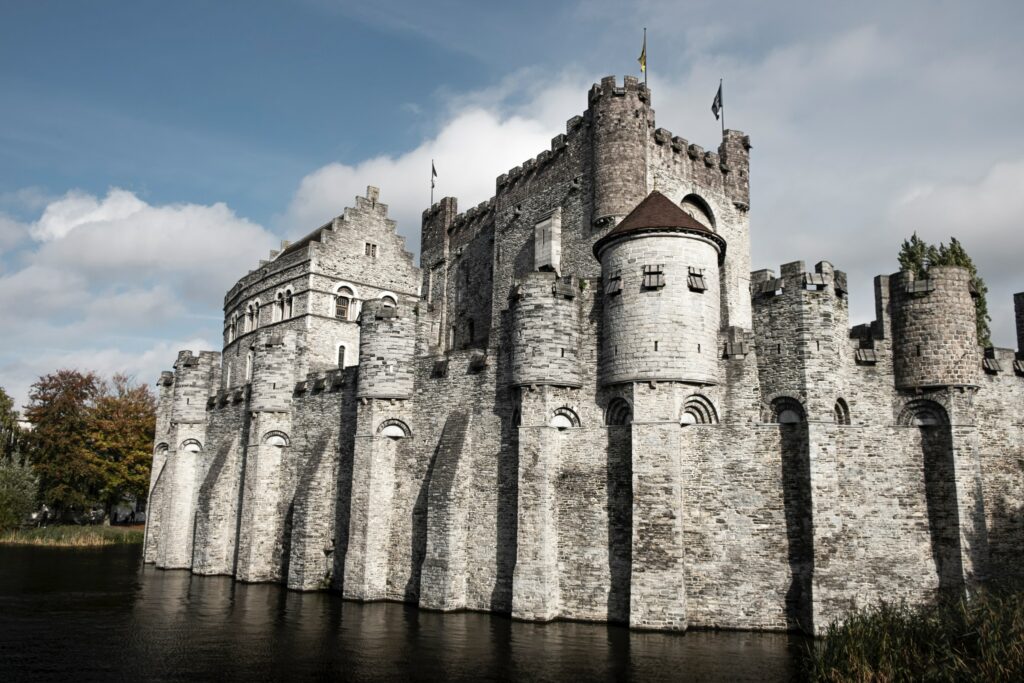
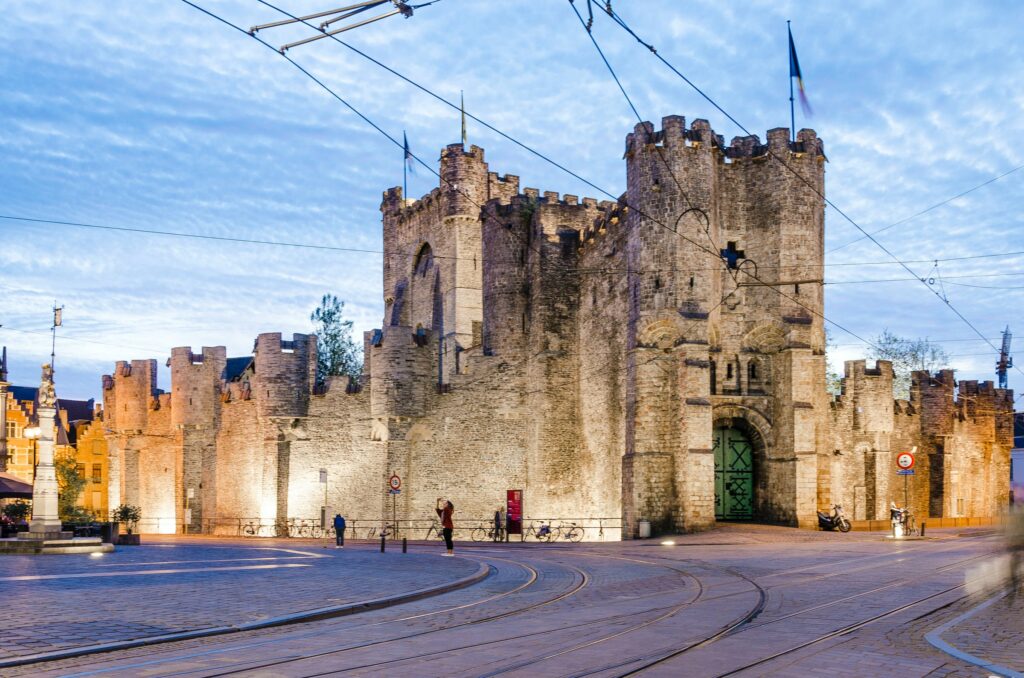
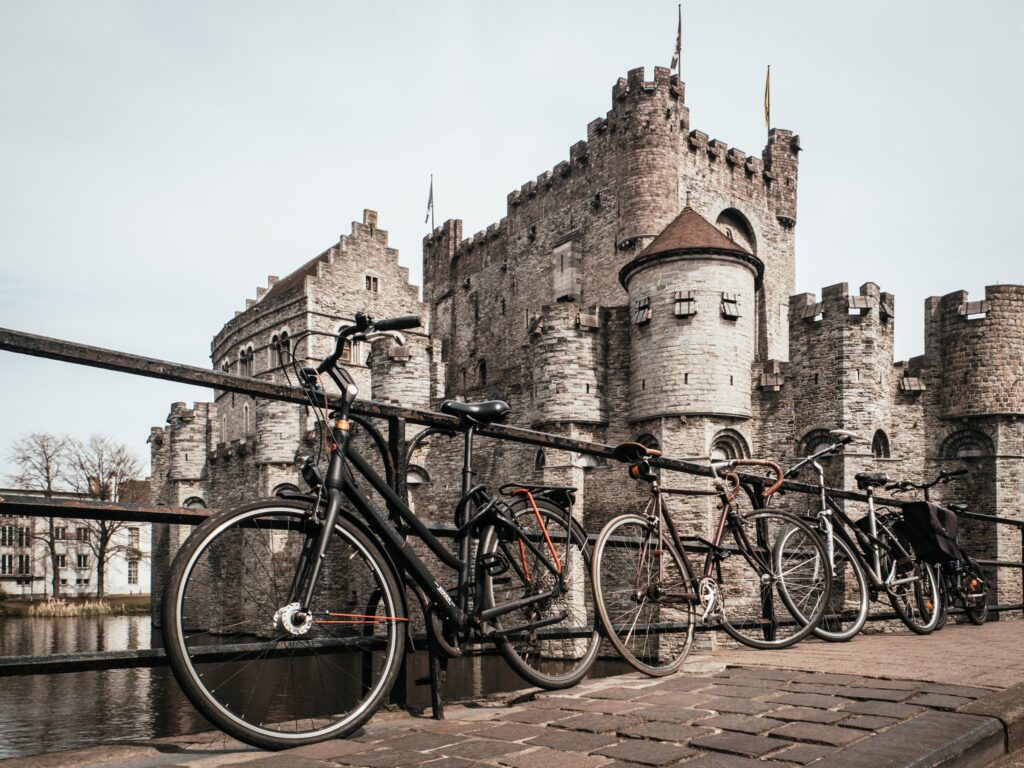
Eventually, the counts left this place in the 14th century, and the castle became just a prison and a courthouse. There were many courts and dungeons in it, where criminals and accused (just awaiting trial) were kept in unbearable conditions and often tortured. And although these unpleasant habits were abandoned, as the area became more civilized in the following centuries, the legacy of those horrors that once happened within the walls of the castle remained.
By the end of the nineteenth century, the reputation had deteriorated so much that Gravensteen was almost wiped off the face of the earth. This place has been significantly restored by maintaining a decorative moat on three sides, open to the public. Initially, there was a museum of torture, perhaps to atone for a kind of “guilt.” But later it was closed. After the repair, only a few instruments of torture are exposed behind the plexiglass window. Despite its dark past, Gravensteen is still one of the most beautiful historical castles in the world.
St. Michael’s Bridge
The San Michele Bridge is the perfect place for romantics who can safely stop here to take a series of breathtaking selfies. Because in whatever direction you look, the fascinating beauty of Ghent will open before you. To plunge into the atmosphere of a fairy tale, it is enough to be here, at the best panoramic point of the city, which coincides with its center. It is better after dark when all historical places are beautifully illuminated. At this moment, anyone on the Sint-Michilsbrug bridge will understand what the hearts of all Ghent residents and citizens of the world are full of, who can share these emotions.
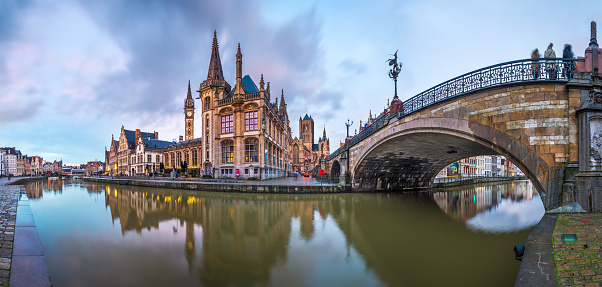
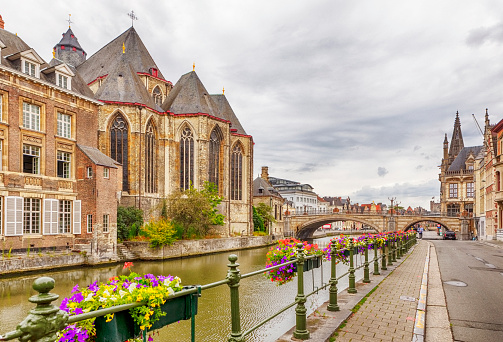
The view is perfect as a postcard: green meadows and Korenlei with an old fish mine, Gravensteen fortress in the distance, St. Bavon Cathedral, the back of the building, and, of course, three famous Ghent towers: the Church of San Nicola, Belfort Tower and the Cathedral of San Bavone. In ancient times, the San Michele sul Lis Bridge was a flat swing bridge, but at the beginning of the 20th century, it was replaced by the current stone arch bridge. In the center of the arch is a beautiful lantern with a bronze statue of St. Michael. Get your smartphones ready.
Cathedral of Saint Bavo
The extraordinary Cathedral of St. Bavon in Ghent was originally called the Church of St. John because it was dedicated to John the Baptist. The church as a whole is a mixture of architectural styles. If the main part belongs to the periods of low and high Gothic, including the western tower, then the crypt is Romanesque instead, and in the high choir, you can see elements of the Renaissance and Baroque. By the way, the baroque organ of the cathedral is the largest in the whole of Benelux. You can also admire the beautiful pulpit made of oak and marble from the 18th century, as well as a collection of goldsmiths and liturgical vestments.
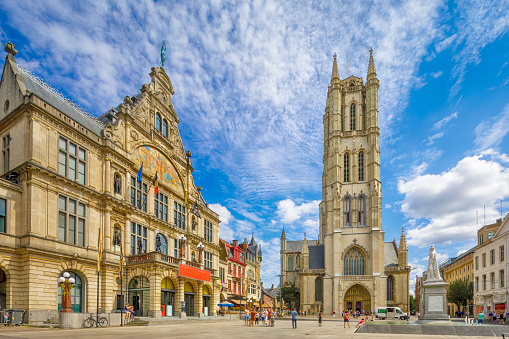
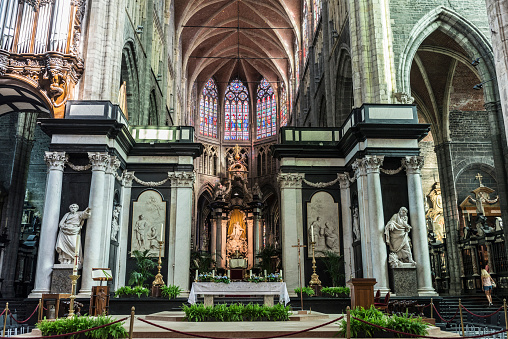
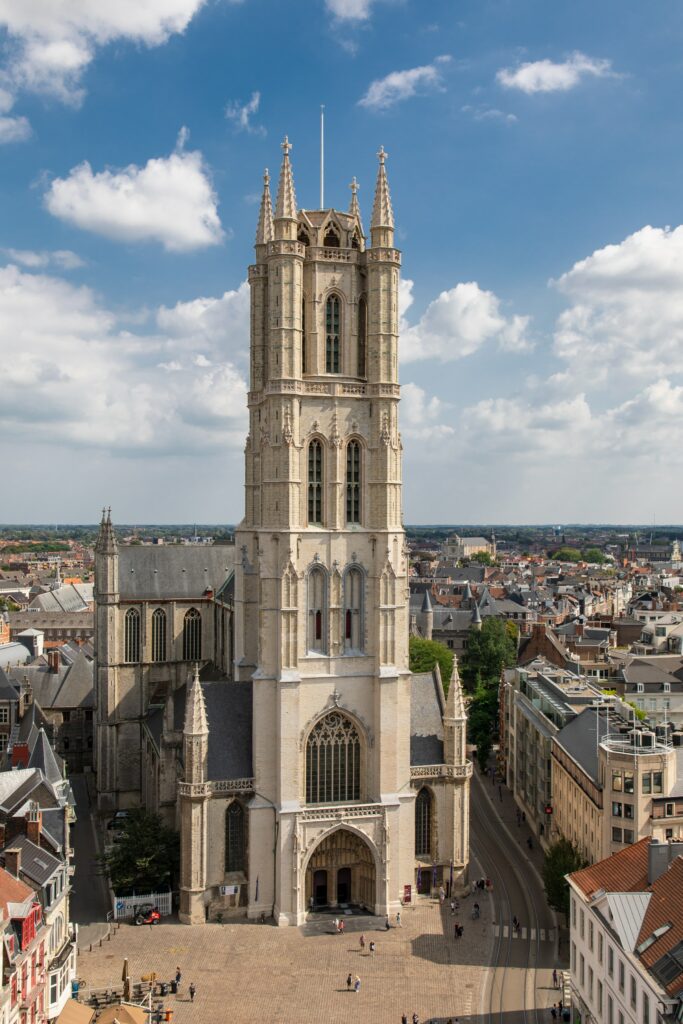
But the main attraction of this cathedral is represented by the painting of Hubert and Jan van Eyck “The Worship of the Mystical Lamb”. This masterpiece of Flemish painting was executed in 1432. It consists of several panels. In 1934, two such panels were stolen, and later thieves demanded a ransom from the Bishop of Ghent, one panel was returned, and the other – “Righteous Judges” – was never found. On his deathbed, Arsene Goedertier, the sexton of St. Gertrude’s church in Wetteren, said he knew where the panel was hidden, but could no longer point to this place.
However, the Ghent altar is not the only work of art in the Cathedral of St. Bavon. It is also worth visiting the “Entrance of St. Bavon to the Monastery” by Peter Paul Rubens, the Calvary triptych by Justus van Gent and the work of Purbus and Gaspard de Cryer. There are also beautifully decorated tombs, including the 17th-century tomb of Bishop Anton of Trieste. The crypt is decorated with frescoes of the 15th and 16th centuries.
St. Nicholas’ Church
It is no coincidence that Sint-Niklaas was chosen as the patron saint of this parish church. Rich medieval merchants from Riva Delle Erbe and Riva del Grano, or Graslei and Corenlei (two piers on the banks of the River Lis) financed the construction of the church and therefore chose the patron saint of merchants and the patron saint of sailors: St. Nicholas. There are no historical facts, but it is said that Sint-Niklaas was the bishop of Mira, a coastal city in Asia Minor, in the first half of the IV century. He was especially loved so that his remains would not be stolen by the Crusaders, around 1087 the sailors took them to a safe place in Italy, the city of Bari.
At that time, about 7 liters of a liquid substance called manna or myrrh with a strong therapeutic effect flowed out of his grave. This first miracle is just one of countless legends. For example, they say that a butcher killed his children, and their meat was offered in the form of pickled pork. Saint Nicholas brought the children back to life and has since been considered a great defender of the kids.
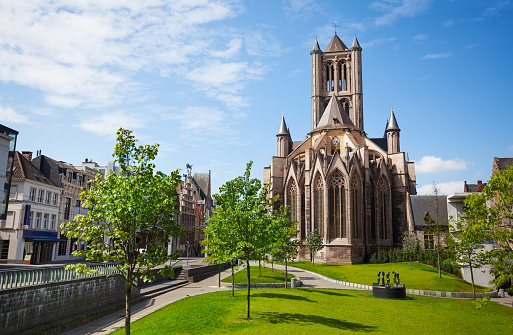
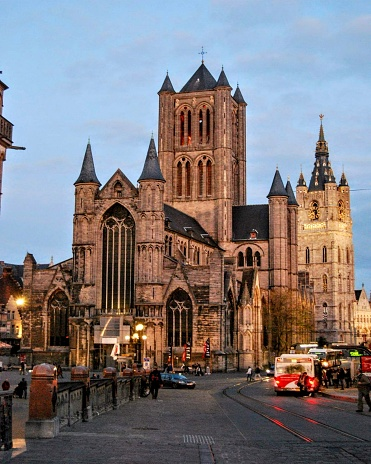
Another story tells of a helmsman who in a dream received three gold coins from the saint to transport a cargo of grain to a Hungry World. When the man found gold coins in his hand after waking up, he immediately fulfilled the dream wish. That is why St. Nicholas is often depicted with three golden spheres and why children traditionally receive chocolate coins on the occasion of the feast of St. Nicholas.
Today the church is part of the Ghent skyline and is one of the main attractions with its Gothic, monolithic style, and grey and blue Tour stones. It was built between 1220 and 1250, destroyed during the religious wars of the sixteenth century, and rebuilt inside in the Baroque style. It is located in the Korenmarkt, the grain market, and often hosts modern concerts and exhibitions in the space of three aisles with a transept, choir, and dispensary.
Ghent Bell Tower
It always begins with a panorama, with that magnificent characteristic line consisting of buildings and monuments, which can be admired against the background of the Ghent sky. This bell tower is the second tower of the trio, noted in all tourist descriptions, located between the Cathedral of San Bavone and the Church of San Nicola. The fire dragon, the symbol of the city, has been guarding the historical center since 1377, protecting the bell tower, and symbolizing the prosperity and independence of this place. The construction of the Cloth Rows adjacent to the bell tower was completed in 1907.
The Gothic style in this case pays homage to the craftsmanship to which the city owes a lot. On the corner of Halle aux Draps is the house of a former jailer. And every Sunday morning from 11 to 12 the bells can be heard ringing. Every first Friday of the month from 20:00 to 21:00, a carillon concert is held instead.
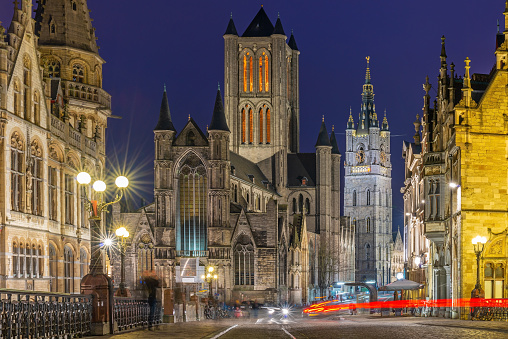
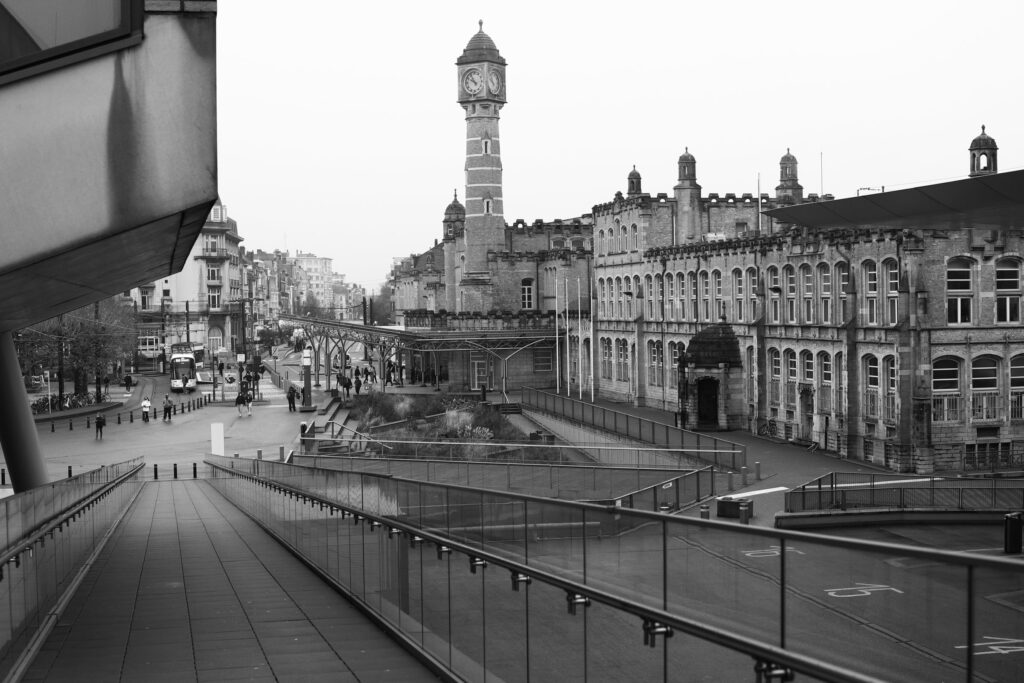
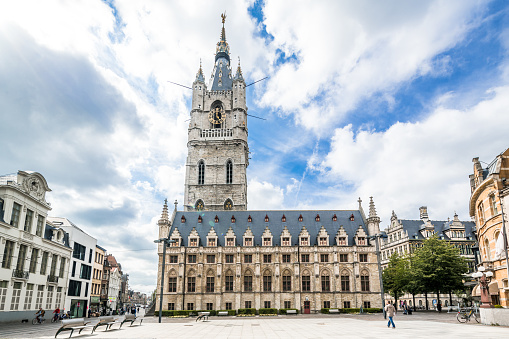
The bell tower, which is considered a UNESCO World Heritage Site, is undoubtedly worth a visit. In 1402, the privileges of the city were kept here locked in a secret safe. Until 1442, the Church of St. Nicholas was the first control room. Later, the guards took their places in the new bell tower. These guards, together with the bell ringers, made up the corps of “city officials” who were in service until 1869. Their task was mainly to pay attention to fires, which at that time were the main danger. Climbing the steps (or taking the elevator from the ground floor), you can still hear the sweet melody of the carillon while watching the busy city activity from above. And before the charm of this panoramic view, it is impossible not to be moved.
In 1741, another building was built between the Bell Tower and the Cloth Rows: the entrance to the city prison. The relief above the pediment tells about the ancient Roman legend about Simon, who was sentenced to death from starvation. He is said to have survived thanks to his daughter, who breastfed him during his daily visits. In Dutch, “mammelokker” means “the one who goes to the breast.
S.M.A.K.
The origins of this innovative cultural space date back to 1957, when Karel Geirlandt founded the Association of Friends of the Museum of Modern Art. Later, in 1999, the Stedelijk Museum voor Actuele Kunst, or Smak, was opened. It was Jan Hoet, the enfant terrible of the international contemporary art scene, who led it for a long time since its opening. It houses a collection that includes works of contemporary art from 1950 and represents such artistic trends as minimal, pop art, conceptualism, Arte Povera, and cobra.
Some authentic masterpieces of modern art are included: for example, the installation by Joseph Beuys “Wirtschaftswerte”. We should also mention the “Aeromodeller” Panamarenko and the “Keeper of the garden” De Cordier. The collection features numerous world-famous artists: from Gerhard Richter to Thomas Schutte, as well as Belgians Marcel Brothers and Michael Borremans.
Korenmarkt
We are located on the main square of the historical center of Ghent. Its name means wheat market, and it is located exactly between the River Lis and the Church of San Nicola. It has recently been restored, starting from the building where the post office was once located, and finally appears in all its glory, like a huge terrace stretching over the beauties of the center.
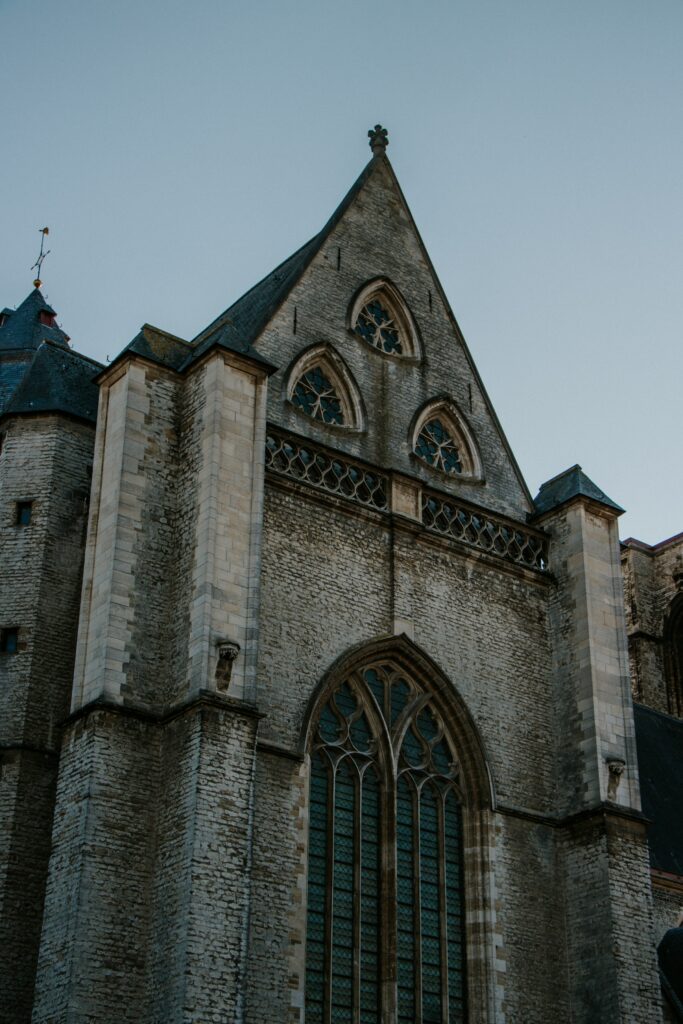
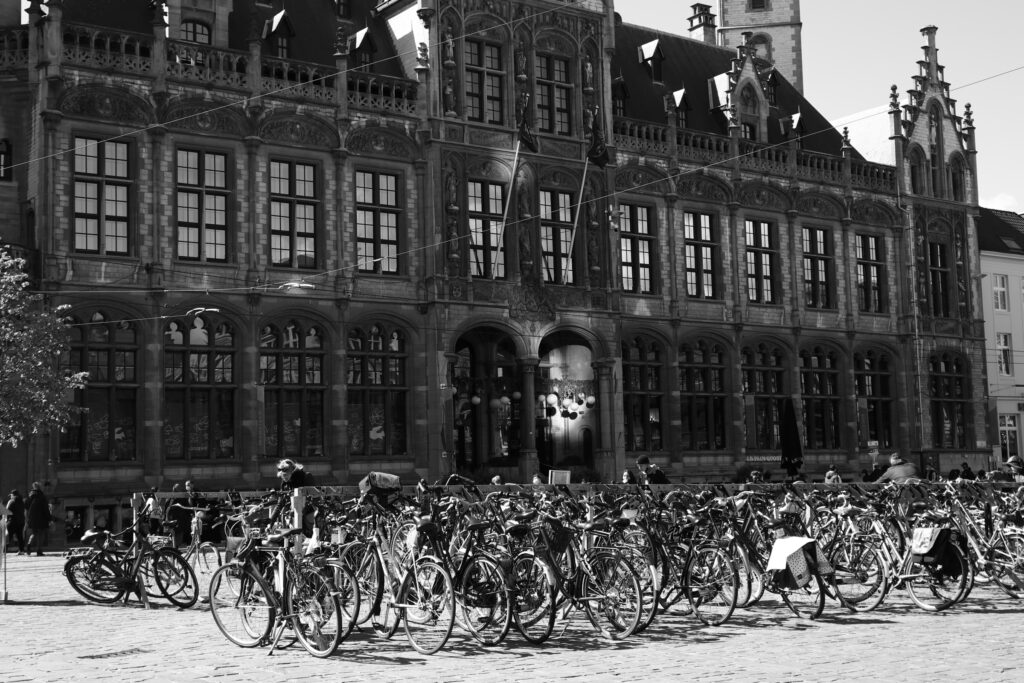
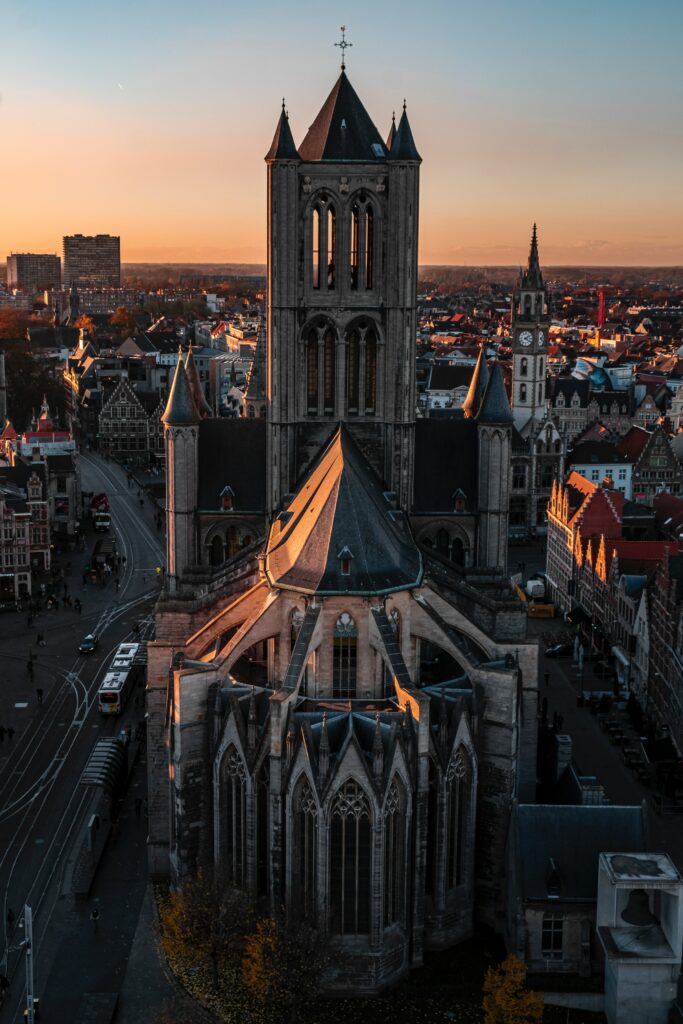
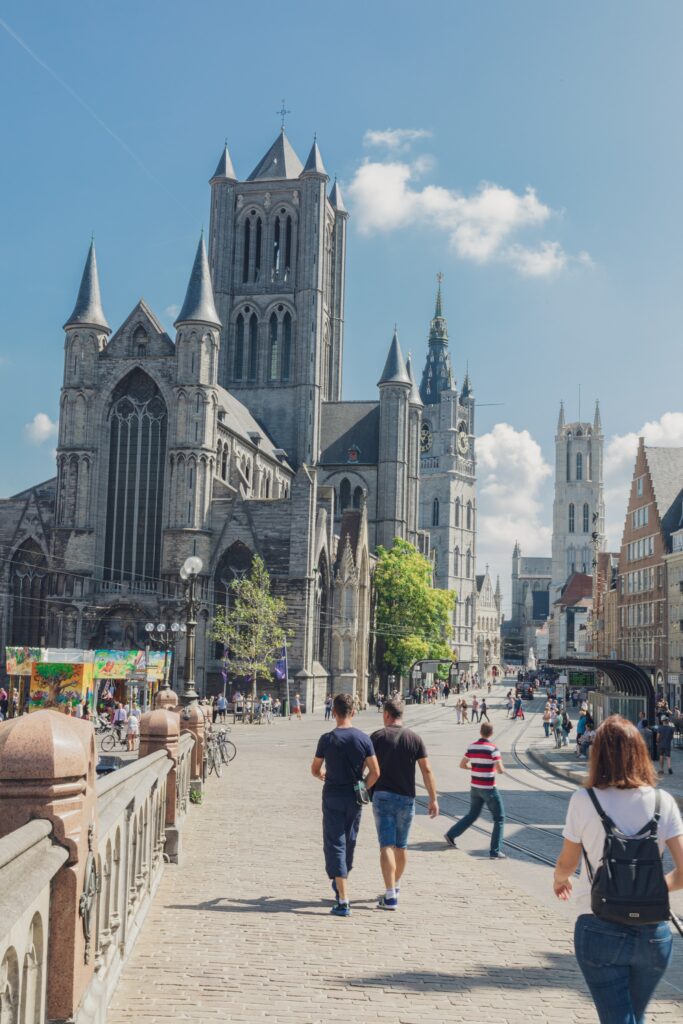
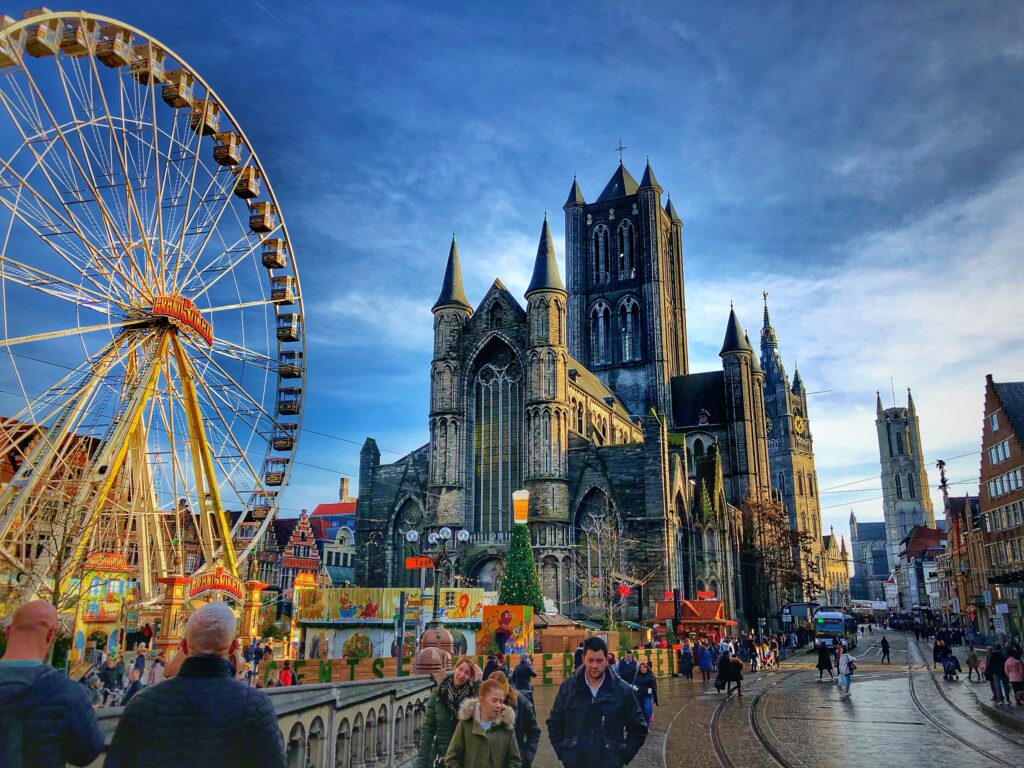
There are a lot of historical buildings around, those that once belonged to merchants, and later passed to the central post office. Today, there are many bars and restaurants on the square, so much so that it has become a meeting place for tourists and citizens. The square also hosts the Gentse Feesten music festival, which enlivens the streets of the center every July.











This was the first European city I’ve visited so far, it was breathtakingly beautiful. It has a certain charm that is hard to match with any of the other US cities I’ve visited so far. As for the food, 10 out of 10. My gourmand husband was very, very pleased!
Booked a city break hoping for the best only to come home sad I didn’t get to experience the city more. From the cobbled streets to the local chocolate tasting, from canal cruises to sightseeing historical landmarks, it’s a dream.
Booked a city break having really low expectations after doing only a quick google search but it quickly became my favorite European city. It’s so incredibly peaceful, full of good food and chill people. What I loved most about it was the fact that it was less touristy than I expected, huge bonus for an introvert like myself.
Lovely city, I spent so much time people watching, the locals were friendly and easy-going, I had a great time!